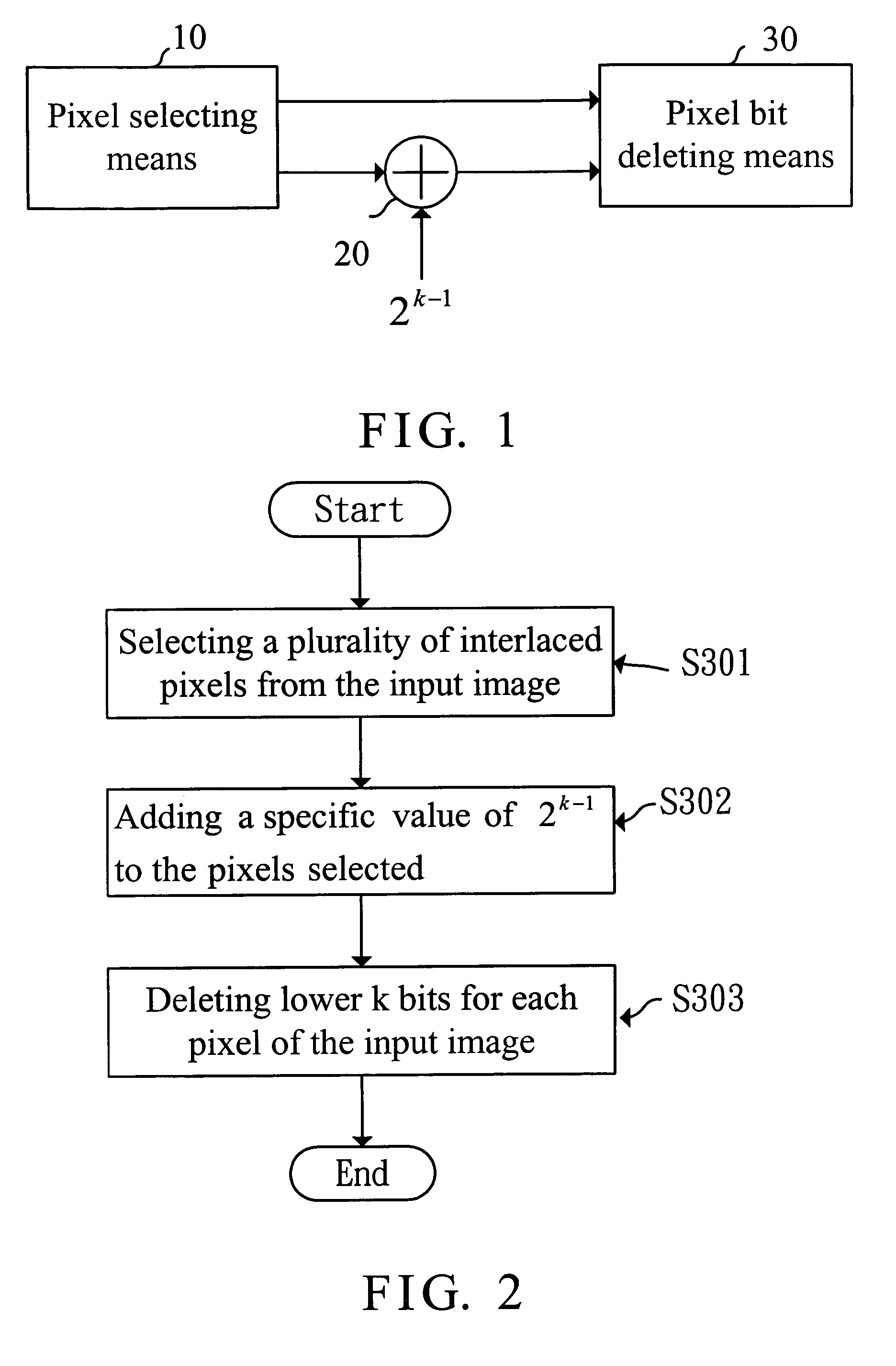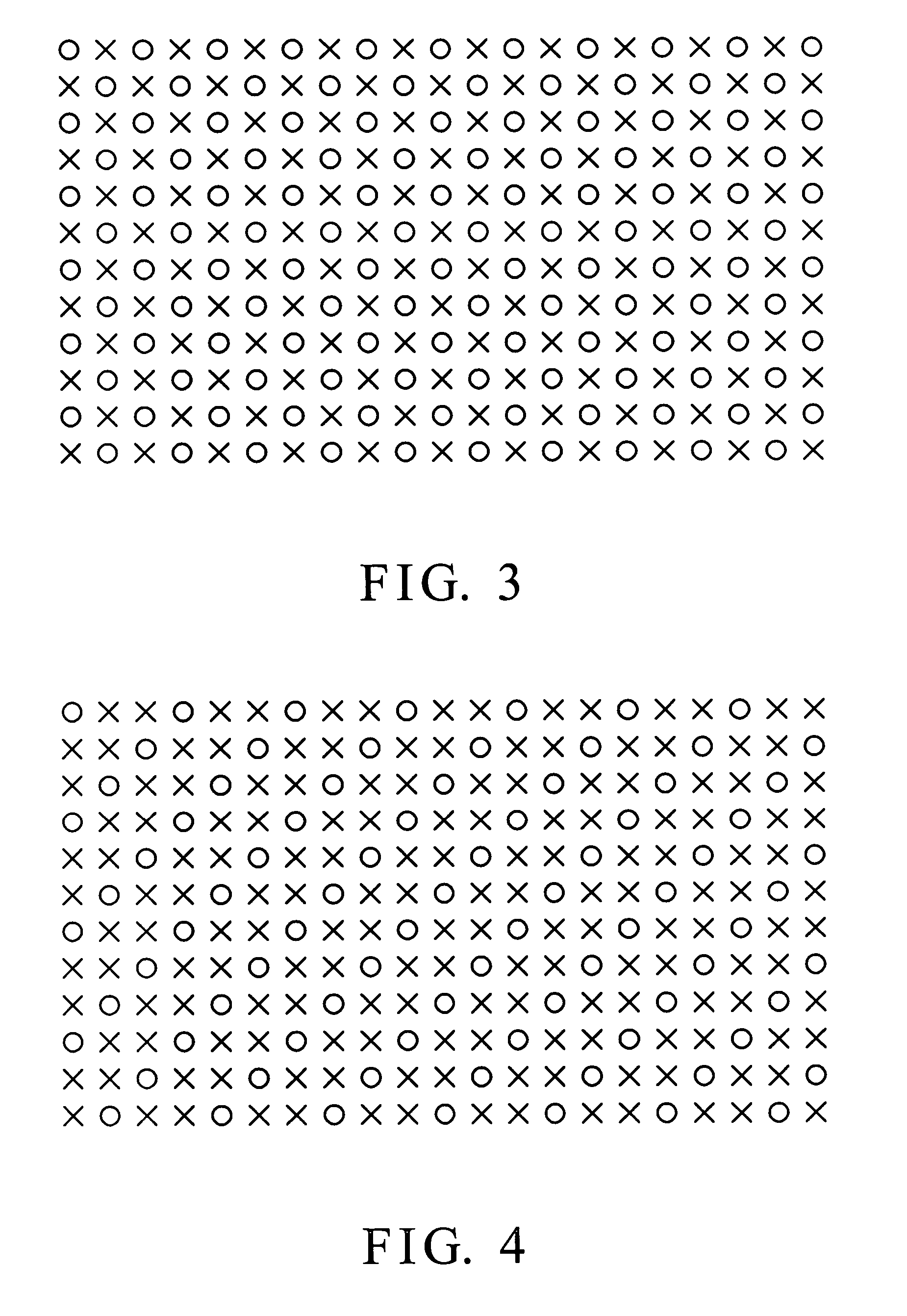System and method for reducing discontinuity of gray level in an image buffer memory
a gray level and image buffer technology, applied in the field of image buffer memory, can solve the problems of reducing the efficiency of the entire system, adding processing time, and drams as image buffers can only have some specified capacities, and achieve the effect of reducing the discontinuity of gray level
- Summary
- Abstract
- Description
- Claims
- Application Information
AI Technical Summary
Benefits of technology
Problems solved by technology
Method used
Image
Examples
Embodiment Construction
[0014]To better understanding, preferred embodiments are described in detail in the following.
[0015]FIG. 1 is a block diagram of a system for reducing discontinuity of gray level in an image buffer memory in accordance with the invention. In FIG. 1, the system is provided to reduce N bit to (N−k) bits for each pixel on an input image so as to save required memory (N and k are positive integers and N>k), which includes a pixel selecting means 10, an adder 20 and a pixel bit deleting means 30. As shown, the pixel selecting means 10 selects a plurality of interleaved pixels from the input image. The adder 20 adds a specific value of 2k−1 to the pixels selected by the pixels selecting means. The pixel bit deleting means 30 deletes lower k bits for each pixel of the input image.
[0016]FIG. 2 is a flowchart of a method applied for reducing discontinuity of gray level in an image buffer memory in accordance with the invention. As shown in FIG. 2, the method can reduce N bit to (N−k) bits fo...
PUM
 Login to View More
Login to View More Abstract
Description
Claims
Application Information
 Login to View More
Login to View More - R&D
- Intellectual Property
- Life Sciences
- Materials
- Tech Scout
- Unparalleled Data Quality
- Higher Quality Content
- 60% Fewer Hallucinations
Browse by: Latest US Patents, China's latest patents, Technical Efficacy Thesaurus, Application Domain, Technology Topic, Popular Technical Reports.
© 2025 PatSnap. All rights reserved.Legal|Privacy policy|Modern Slavery Act Transparency Statement|Sitemap|About US| Contact US: help@patsnap.com



